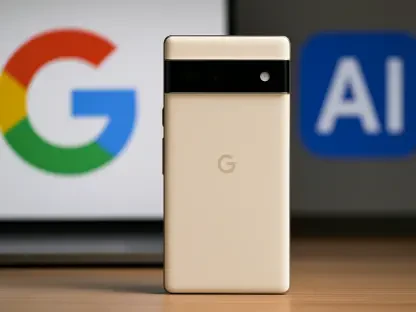Have you ever paused before sharing a photo, wondering if an app might snoop through your entire gallery? In a world where digital privacy feels increasingly fragile, Android 16 steps in with a game-changing update to its Photo Picker tool that promises to redefine how users manage and share their media. This isn’t just a minor tweak—it’s a bold move to enhance control. With data breaches making headlines almost daily, the timing couldn’t be better for a feature that promises both seamless functionality and ironclad control over personal content. Dive into the details of this upgrade and discover how it could reshape your digital interactions.
Why Photo Sharing Feels Safer Now
The Photo Picker in Android 16 emerges as a quiet hero for anyone cautious about app permissions. Unlike older versions where granting access often meant exposing an entire library, this update narrows the scope to only the files you choose. Imagine sending a single vacation snapshot without worrying about unrelated personal images being accessed. This targeted approach addresses a common frustration, ensuring that sharing remains quick yet secure. It’s a small change with massive implications for day-to-day app usage.
Beyond just limiting access, the design prioritizes ease. The interface feels smoother, cutting down the time spent fumbling through folders. Whether uploading a document or posting a meme, the process is streamlined to keep frustration at bay. Early reports suggest users are already noticing the difference, with many praising how intuitive media selection has become. This balance of simplicity and protection marks a significant leap in mobile usability.
The Rising Demand for Digital Privacy
As data scandals continue to shake public trust, the call for stronger privacy measures grows louder. Studies show that over 80% of smartphone users worry about how apps handle their personal information, a statistic that underscores the urgency of updates like this one. Android 16’s focus on the Photo Picker reflects a broader industry shift toward safeguarding user data while maintaining innovation. It’s a direct response to concerns that have lingered for years.
This isn’t just about reacting to headlines; it’s about anticipating user needs. With every app update or new download, the risk of unintended data exposure looms. The tech community has noted that platforms prioritizing transparency tend to retain user loyalty longer, a trend Android seems keen to follow. By embedding privacy into everyday tools, the system aims to rebuild confidence in a landscape often marred by skepticism.
Unveiling the Photo Picker’s Cutting-Edge Features
At the heart of Android 16 lies a reimagined Photo Picker packed with features that elevate both control and convenience. The redesigned interface cuts through clutter, allowing users to pinpoint photos or videos without endless scrolling. Add to that advanced filters—sorting by date, location, or file type—and the hassle of finding specific media vanishes. These tweaks make sharing not just faster but far more precise.
Integration with cloud services like Google Drive sets this update apart, letting users pull files from multiple sources without switching apps. But the standout is the privacy overhaul: clear prompts now detail exactly which apps access selected files, ensuring no hidden permissions sneak through. Tech reviews highlight that this transparency tackles a long-standing pain point, with one analyst calling it “a benchmark for app accountability.” Every element works together to keep users in command of their data.
Voices from the Tech World and Beyond
Feedback on Android 16’s Photo Picker has been overwhelmingly positive, with experts lauding its dual focus on utility and security. A prominent tech journalist remarked, “This update finally gives users the reins over their media—it’s a rare win for privacy without sacrificing speed.” Such endorsements point to a feature that doesn’t just meet expectations but exceeds them, setting a new standard for mobile tools.
Users, too, are vocal about the impact. Beta testers have shared stories of effortlessly sharing work files or family photos, all while feeling assured their broader gallery stays private. One tester noted saving precious minutes during urgent uploads, a testament to the tool’s efficiency. These real-world experiences suggest that the update resonates on a practical level, addressing both everyday needs and deeper security concerns.
Tips to Maximize the Photo Picker’s Potential
Getting the most out of Android 16’s Photo Picker starts with a simple device update to ensure access to the latest features. Once updated, take a moment to explore the permission prompts that pop up during sharing—these are your gateway to deciding who sees what. Limiting access to only necessary files is now just a tap away, empowering users to customize their comfort level with each app.
Experimenting with the built-in filters can also save time, especially for those with sprawling media libraries. Need a photo from last month’s trip? Sort by date or location with ease. Additionally, linking cloud storage accounts opens up a world of flexibility, pulling files from various platforms without extra steps. Regularly checking app permissions in settings ensures no outdated access lingers, keeping your data footprint as tight as possible.
Reflecting on a Privacy-First Milestone
Looking back, the rollout of Android 16’s Photo Picker stood as a pivotal moment in balancing user convenience with data protection. It tackled head-on the unease many felt about oversharing through apps, offering a solution that felt both practical and reassuring. The emphasis on clear permissions and intuitive design left a lasting mark on how mobile systems approached personal content.
For those navigating this updated landscape, the next steps were clear: embrace the tools by staying informed about permissions and exploring the full range of features. As privacy concerns continued to evolve, adopting such updates became not just a choice but a necessity. This upgrade paved the way for smarter, safer sharing, urging users to take control and stay vigilant in an ever-changing digital world.









